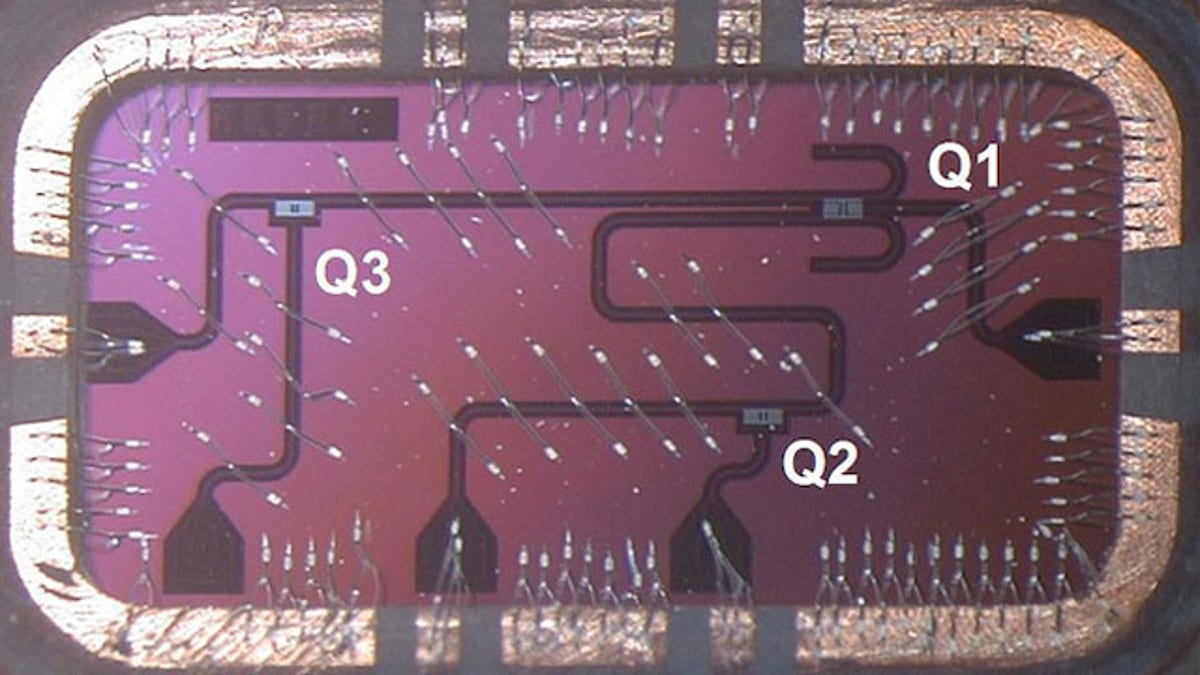
A silicon chip containing qubits, the basic information building blocks for IBM's quantum computer. (IBM Research)
IBM is on the cusp of a stunning technological breakthrough that could make superpowered quantum computing a reality in as little as 10 years, the company announced.
On Tuesday, IBM researchers presented their findings in a presentation for the American Physical Society in Boston that they promise will bring them closer to creating a working quantum computer, something often referred to as the “Holy Grail” in the field of advanced computing.
Future computers that implement quantum technology could solve problems in seconds, minutes, or days -- problems that would take current supercomputers billions of years, says Mark Ketchen a manager in the Physics of Information Group at IBM Research.
“It would probably take all existing computers the age of the universe to factor [a thousand decimal digit] number,” Ketchen explained. “Whereas a quantum computer of appropriate size maybe could do it in an hour.”
The potential for such massive computing power is endless, everything from modern encryption to weather prediction.
“The hope for most of us -- and there are some early results like this -- is that we’ll be able to simulate things we’ve never been able to simulate before,” said Jay Gambetta, an experimental physicist in the Quantum Computing Group at IBM Research.
Current computers rely on a simple binary system of 1s and 0s, where every bit of information is either one or the other. In quantum mechanics, information can be in many states at once, meaning that every quantum bit isn’t merely “on” or “off” or one or zero but a combination of the two.
The problem for most researchers has been managing the notoriously volatile qubits, which have a very short lifetime before the information they carry becomes lost. IBM has made advances in increasing qubit lifetimes as well as speeding up computational speeds so the information can be captured before it is lost.
"These are very delicate systems," said Matthias Steffen, another manager in IBM's quantum computing group. "The one state is usually encoded in the excited state of a quantum system ... that can decay like an atom can emit a photon. That's an error when it happens to our qubit. The frequency that errors occur limit your device's performance. If errors are few and far between, you can implement error correction."
But results have been promising, so promising in fact that Ketchen feels a new beginning is just around the corner.
“I think the thing that’s really exciting right now is that on the experiment front, we’re actually doing things that are making us think like, ‘hey this isn’t 50 years off, this is maybe just 10 years off, or 15 years off,’” Ketchen said.
“It’s within reach.”




















